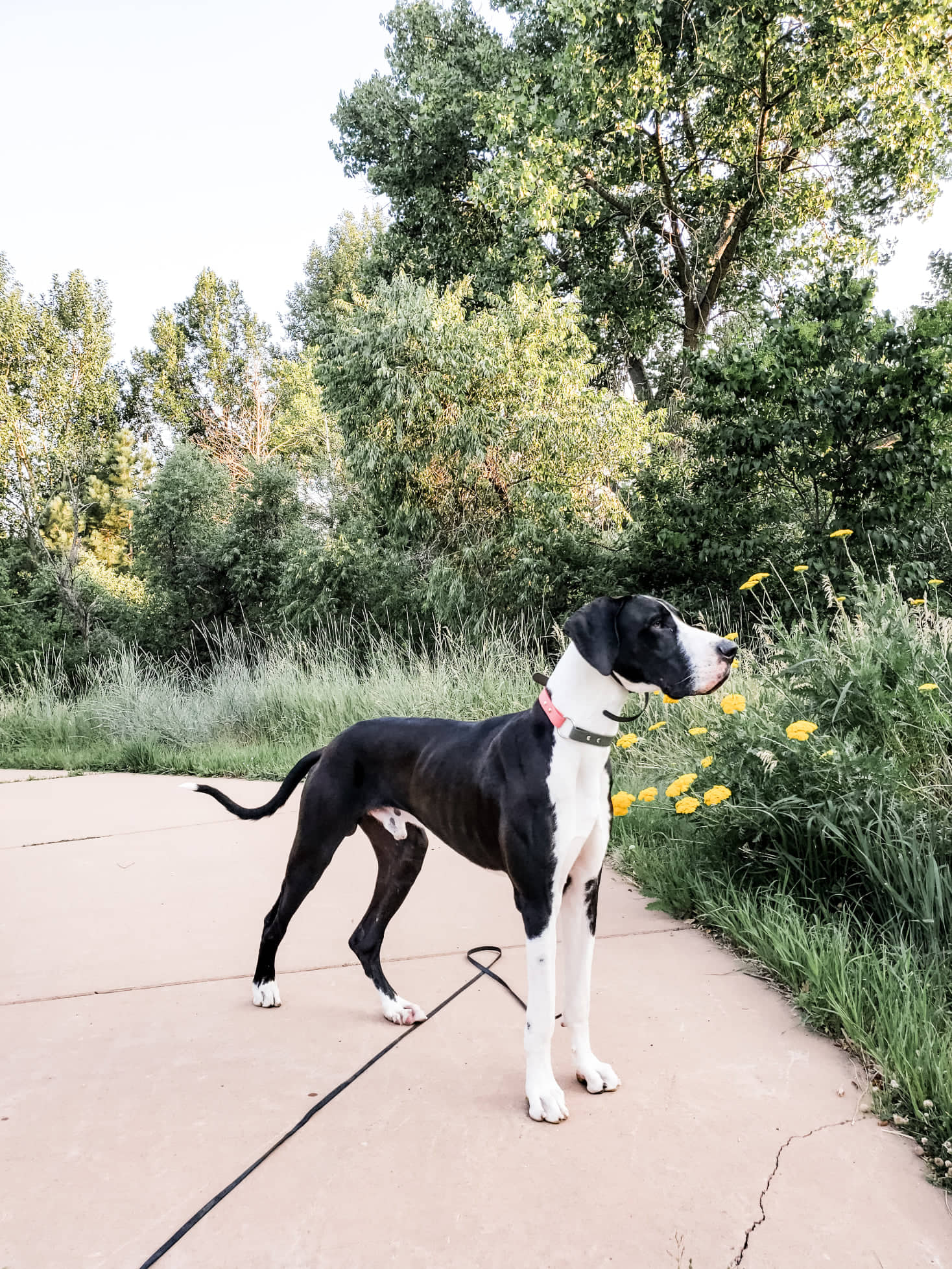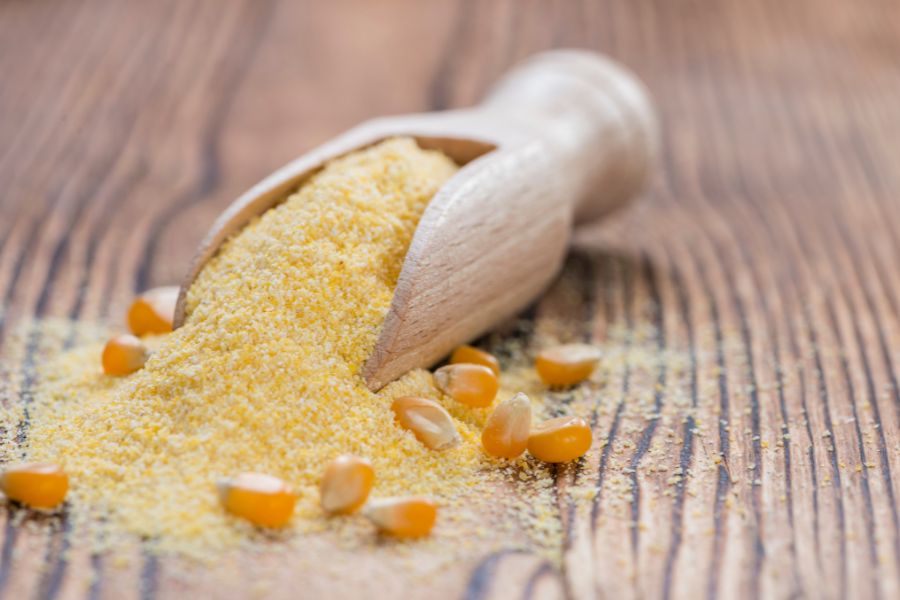Overweight Great Danes is a HUGE problem.
It’s fairly common knowledge that as a general rule, Great Danes grow until they are 3.
They will typically gain height for the first 2 years, and then ‘fill out’ until age 3.
A lot of people, however, seem to mistake ‘getting fat’ with filling out!
Great Danes are NOT supposed to be a heavy, weighty breed. Even ‘Euro’ built Danes should be lean and have a defined waist.

OVERWEIGHT GREAT DANES ARE PROBLEMATIC
Overweight Great Danes are not ‘cute’ or ‘funny’.
Overweight Great Danes cause Great Danes to live shorter and less healthy lives.
Back yard breeders have been breeding ‘Euro’ Great Danes, which has made many people think it is normal to have Great Danes be floppy, droopy and ‘fat’.
Euro Danes: A Big, Droopy Problem
What Does Euro Mean in Great Danes?
SPAY & NEUTER
It is around age 2 when many Great Danes have their spay or neuter.
Spay and neuter causes a shift in hormones that for many dogs also leads to a slower metabolism and weight gain.
Many people see this happen and assume their dog is ‘filling out’, when really…their dog is just getting fat.
It’s important to work with your veterinarian following a spay/neuter to make sure your Great Dane stays active and at a healthy weight. We recommend waiting to spay/neuter until your dog is at least 18 months of age.

WEIGHT IS BAD FOR DANES
There seems to be a contest to have the biggest, heaviest Great Dane.
Excess weight, however is extremely hard on them.
Most Danes are not built to be 170+lbs. Adding food, satin balls and coconut oil to their diet to ‘bulk them up’ or ‘fill them out’ is extremely unhealthy.
Most Danes may look lean, but very few actually need help gaining weight.
Dogs that are kept at a health weight live on average 2 years longer than their overweight counterparts.
Being ‘EURO’ is not a reason for a Dane to be heavy, stocky or chunky.

Lean, fit dogs have an easier time playing, walking, running, and getting around.
As a society we are so used to seeing heavy dogs that we may find it alarming to see a dog that has been kept lean and at a healthy weight!
There is nothing cute about letting your Great Dane get fat.
Overweight dogs are more likely to suffer from:
- Diabetes
- Bladder Stones
- Heart Disease
- Hypertension
- Cancer
- Osteoarthritis
- Anesthesia complications

(An overweight Great Dane, above)
WHAT IS FILLING OUT?
In Great Danes, filling out refers to the process of the dog developing breadth/width in the chest and hips, as well as developing muscle mass.
Neither one of those things has to do with becoming heavy. Good muscle development is extremely important for Great Danes!
As your Great Dane matures and finishes filling out, you may notice a broader chest and hips, stronger more developed shoulders and larger more defined hip and thigh muscles.
Miniature Great Danes: The Pocket Size Version
Is My Puppy Too Skinny?
Their face will mature quite a bit and you may notice an increase on the scale, but that’s not necessarily from fat!
Keep your Great Dane active. ***Many people believe that Great Danes should be restricted from exercise as a means to reduce the risk of bloat. At this time, studies indicate that there is no advantage to restricting water or activity, even following meals. There are, however, many advantages to allowing your Great dane to move naturally on soft, varied terrain (fields, hiking trails, etc.)
Below is a health, well-muscled 17 month old intact male Great Dane that is just beginning to ‘fill out’. He is still very lean and gangly and has a lot of maturing left to do:

Below is a photo of his Grandfather, a mature AKC CH. Great Dane that has been kept at a healthy weight. This gives you a good picture of what a Dane may look like as a young pup and then later as a more mature, filled-out adult.
You can see that an outline of the ribs may be visible, and the dog has a waist that can be viewed from both the side and above. His head, chest and hips have become broader and have matured. He is not heavy or overweight!

GENETICS MATTER
Genetics really matter when it comes to size! Don’t compare the weight of your Dane to the weight of others.
Even two Danes of the same weight can look massively different, depending on their body fat ratio, muscle development and overall structure.
Run from any breeder whose focus is on creating the largest, droopiest, heaviest dogs out there.
If they are advertising weights as a means to prove their breeding stock, they may not have the best interest of the dogs in mind. A healthy, well-bred Great Dane is the Apollo of dogs, and will be large without being uncomfortably heavy.
HOW TO KEEP YOUR GREAT DANE AT A HEALTHY WEIGHT
- Choose a high quality, nutrient dense diet and don’t over-feed
- Keep dietary fat content at or below 14%
- Keep your Great Dane active! A short walk each night on pavement is not enough exercise for most dogs to stay lean, fit, and mentally healthy.
- Free play and exploration on varied terrain (grass, sand, gravel, hills, rocks, etc.) is important for physical & mental health, and we believe is more important than leashed walks on the sidewalk.
- Tug of war, flirt poles (for dogs age 2+), and hiking can be wonderful ways to bond with your dog and keep them in great shape!
- Take a FitPaws class with a qualified instructor.
The information contained in this post is for informational purposes only. We do our best to present the most up-to-date research, however it is up to the reader to make decisions regarding the health and well-being of their dog. We make no claims here to prevent or treat bloat or any other condition related to Great Danes. Find a veterinarian with GIANT breed experience, and chat with them.
Some of the products we list on our website contain affiliate links. If you choose to make a purchase, we may receive a small commission for referring you. We only recommend products that we truly believe in. This commission does not affect the price of the product and is used to fund our content and expenses related to operating this website.





One Response
What a great site for puppy owners. Thanks but my Dane is 12 years old. I made it through all the other stages but having trouble with this geriatric stage. I know she wont live forever but I want her to be as healthy and comfortable as possible in her last months. At 7 years she developed a facial palsy and could not swallow. We were told after a trip to a vet neurologist that it was a thyroid deficiency. So 5 years on a thyroid supplement. She averaged 145 lbs up until this year but her weight has plummeted. We changed up her diet about 4 months ago. Started her on Farmers Dog brand. Initially she began gaining back. She got up to about 120 (from a ghastly weight of 112. But at 3000 calories a day she is still just maintaining and looks malnourished. Her joints and hips have become an issue also and I am sure that contributes to her weight loss. There is a high suspicion of cancer as well. What I wanted from your site was a recommendation of target calories per pound. She looks healthy at 135, I would be happy at 130 considering her hips. But dont know what her caloric intake should be to achieve this, and maintain. What high calorie food can I supplement her diet with to get her back on track. Is homemade peanut butter an option? As long as she has a healthy intrest in life, plays with her toys, looks forward to meals with an appetite and seeks us out for comfort and companionship, we plan on doing what we can to keep her comfortable and alive. The Thyroid and a vet prescribed NSAID are her only meds and she takes. She takes a glucosamine chondroitin supplement and a dental chew daily as well. Last vet visit was 3 weeks ago.